Salone del Mobile 2022, Milan
Some of the most creative minds on the planet converged on Milan Design Week this year to share the fruits of their imagination.
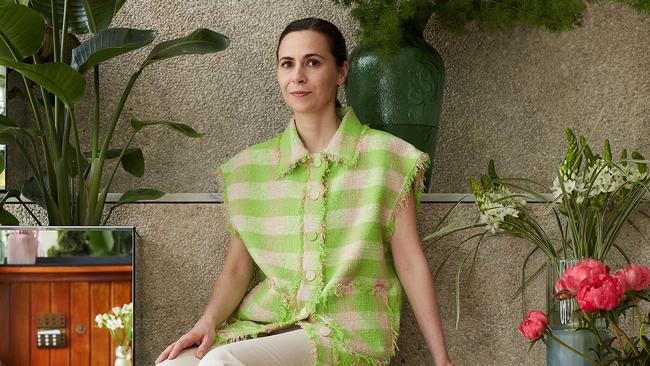
HANNES PEER
A young architect and designer on the verge of career superstardom, Hannes Peer has opened the doors to his studio in Porta Romana for the first time.. A survey of new works ranged from the pieces created exclusively for Blend Gallery Rome, such as the Lina table lamp in pigmented Murano glass, and the mesmerising Sole coffee table resembling a topographic map, created in collaboration with the mosaicist Paolo Racagni from Ravenna, who used a blend of precious fragments of Arabescato marble, Travertine and lapis lazuli. Peer’s own pieces include the sculptural lamps Chill and Kink carved in onyx and marble, and the Totem seat that echoes archaic forms, finished in Calacatta Paonazzo marble offcuts. The spectacular chandelier made of more than six hundred glass petals and produced in Murano by 6: AM presides over the sunken lounge space. In the upper part of the studio, the atmosphere shifted to an elegant New York-style living room, a fragment of the designer’s exhibition at Alcova in 2021. There are pieces from the expanding Paesaggio collection launched by SEM in 2019 –an ensemble that nods to the “interior lessons of Joe D’Urso and Alan Buchsbaum”, says Peer.
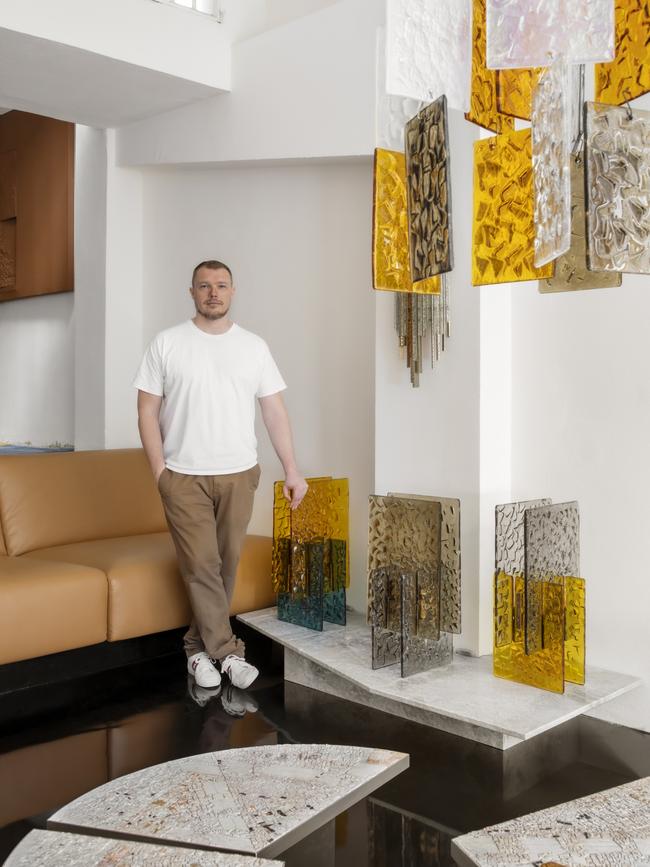
CRISTINA CELESTINO
Each year for Milan Design Week, Cristina Celestino unveils a personal project centred on one of the city’s many icons. In 2019, Caffè Concerto Cucchi reinvented one of the city’s most beloved pastry shops into a 1930s dance salon. This year she turned the spotlight on one of the city’s oldest florists – Fioreria Radaelli in the heart of Milan’s “fashion quad” on Via Manzoni. Founded in 1886, Fioreria Radaelli’s boutique was redesigned in 1945 by Guglielmo Ulrich, who created a rich space where the boundary between architecture and décor was dissolved. Elements of landscape architecture, such as terracesand a fountains, established a dialogue with the principles of furniture design, including writing desks, display cases and wood panelling. Celestino’s reinterpretation takes its cue from the indoor-outdoor dialogue of the existing envelope. The installation was organised around the tension generated by the unlikely relationship between the original architectural parts designed by Ulrich and the designer’s intervention. She inserted decorative and contemporary elements that sat in contrast with the existing aesthetic, creating a conversation between the feminine and masculine, heritage and the contemporary.
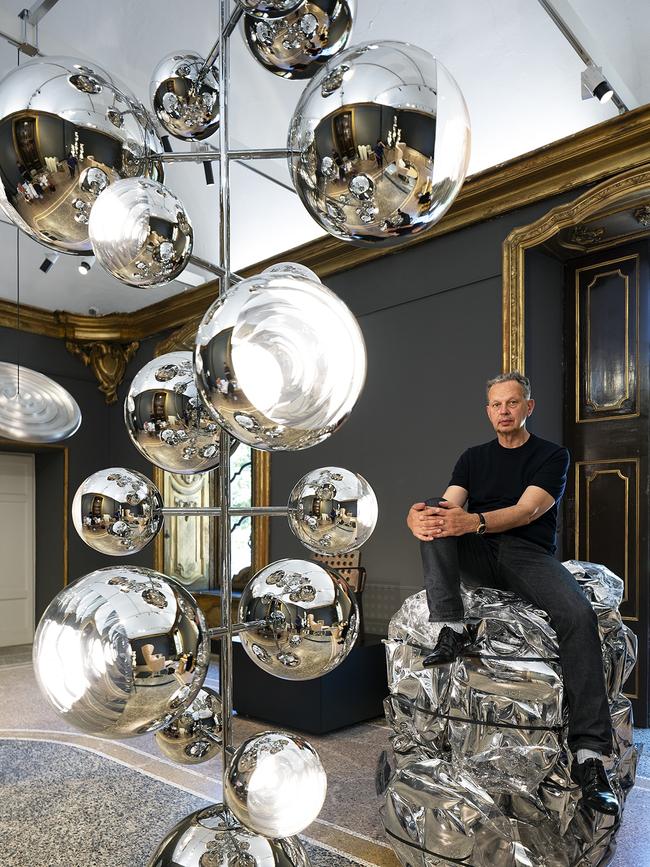
TOM DIXON
TWENTY, an exhibition celebrating 20 years of Tom Dixon brand, was hosted at Palazzo Serbelloni in the centre of Milan. The event showcased some of Dixon’s most recognised collections, such as the Mirror Ball, Melt and Fat, however the overarching focus was on innovation and the future. Highlights at included a gigantic Melt Dichroic chandelier updated with a dichroic filter, a Bird chair made of eelgrass from Denmark, an inflatable latex S-chair, the Mirror Ball chandelier made from 100 per cent recycled polycarbonate, and giant mycelium ‘Scent Columns’ developed from a packaging project.
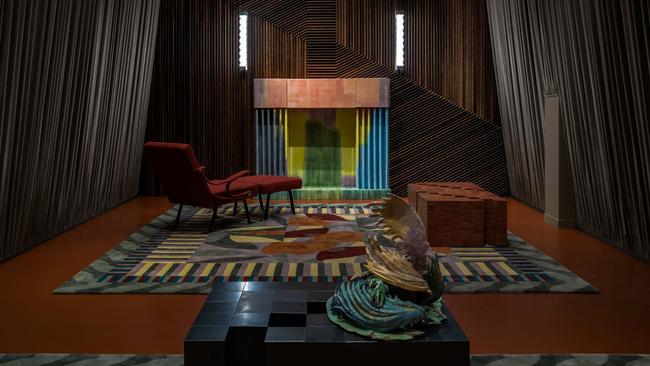
STUDIO LUCA GUADAGNINO
In 2016, film director Luca Guadagnino told a writer at T: The New York Times Style Magazine “My secret desire is to be an interior designer.” In 2017, he established his interior architecture practice in Milan and has since executed commissions for private clients, as well as retail spaces for Aesop in Rome and London. Studio Luca Guadagnino made its public debut at Milan Design Week, at Spazio RT, with an installation of two contrasting living rooms inspired by the mid-century Italian architect Carlo Scarpa. Named Accanto al fuoco (By the fire), each featured a fireplace designed by the studio. One was in Italian Ceppo di Grè stone, resembling the city facades, while the other was in fluorescent ceramic by Nymphenburg Porcelain Manufactury in Munich, Germany. The walls were lined with triangle-shaped panels made of palm wood and oak. The coffee tables in black granite and red travertine marble echoed the zigzag motif of the timber panelling, while the rugs were designed with graphic designer Nigel Peake. There were ceramic floral sculptures by Italian-American artist Francesco Simeti, and Vintage Digamma seating from 1957 by Italian designer Ignazio Gardella.
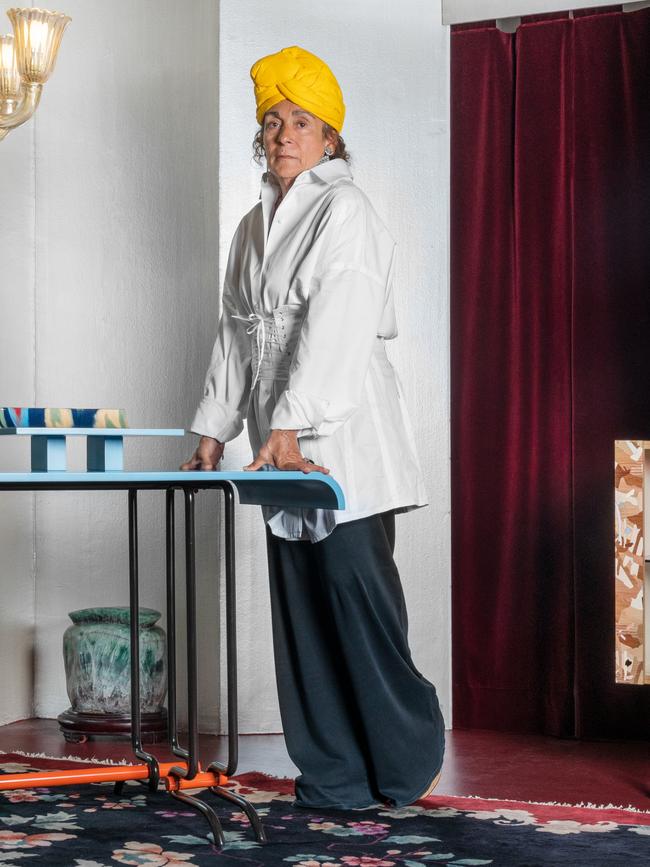
NILUFAR DEPOT
Founder of the famed Nilufar Gallery on Via Della Spiga, and Nilufar Depot, a vast 1500sq m space in a former silverware factory, Nina Yashar is a gallerist, collector, patron, and one of the most prominent taste-makers in contemporary design. Born in Tehran in 1957, she moved to Milan, where her father became a leading merchant of Persian carpets and precious textiles. Yashar opened her own business aged just 21. Each year, Nilufar Depot plays host to a richly diverse display where contemporary design sits in dialogue with iconic and historical pieces. This year’s showcase included works from more than 25 renowned creatives that blended generations, styles and nationalities. Highlights included Patrick Tuttofuoco’s Out of Body’s installation in the courtyard; Martino Gamper’s Innesto project; Andres Reisinger’s Too Much, Too Soon! in Yashar’s office; Bethan Laura Wood’s Summer Room installation; Draga & Aurel’s The Candy Box collection; and Far – Craftmania, curated by Valentina Ciuffi with new projects by Odd Matter, Carlo Lorenzetti and Etienne Marc. There were allistorical and rare pieces by the likes of Gio Ponti, Lina Bo Bardi, Venini and Osvaldo Borsani.
LEE BROOM
Marking the brand’s 15-year anniversary, Lee Broom launched six new collections – the first lighting release in four years for the British designer renowned for his theatrical installations. Divine Inspiration unveiled a journey inspired by places of worship, with a series of dramatic rooms each heroing a new product. The genesis of the collection was Broom’s research into the world of Brutalist architecture, which led him to explore places of worship and the monumental design language associated with religious architecture. how light is often linked to evoking a sense of stillness, reverence, and contemplation.
BARANZATE ATELIERS
A new kid on the block, Baranzate Ateliers took over the apocalyptic setting of an abandoned production facility north-west of Milan. Led by Brussels-born product designer, artist and interior architect Lionel Jadot, who in 2019 founded the Belgian design collective Zaventem Ateliers, Baranzate looks to establish itself as the next design destination of Milan. Many of its participating designers were from Zaventem – Adeline Halot, Krjst Studio, RSLT, Maison Armand Jonckers, Dim ateliers, and Lionel Jadot himself. The roster also included Belgian designer Ben Storms, Romanian-born Mircea Anghel and Antwerp-based Everyday Gallery.
ALCOVA
An unmissable event in the Milan Design Week circuit, Alcova is a platform for forward-looking design, spread across 2ha of a spectacular urban park and an old military hospital. Co-founders Valentina Ciuffi of Studio Vedèt and Joseph Grima of Space Caviar brought together projects by 90 exhibitors, from established figures as well as schools, academies and institutions, exploring new developments in the fields of technology, materials, sustainable production, social practice and more. Highlights included Dutch stone purveyors SolidNature’s Monumental Wonders, and new pieces by Rotterdam-based designer Sabine Marcelis and architecture firm OMA. Lambert & Fils and DWA Design Studio presented round two of Caffè Populaire along with New York-based wallpaper studio Superflower. The eight-day aperitivo garden brought raw matter and refined materiality together. Inside, a central table blooming with wildflowers created a dialogue with the garden and showcased Lambert & Fils’ new lighting collection Silo. Beni Rugs and artistic director Colin King unveiled Spoken Lines, inspired by the architectural history of Milan and curated by Moroccan artist Amine el Gotaibi. Objects of Common Interest and Etage Project examined how domesticity can be nuanced by objects and their placement in space in Domesticity-At-Large.

To join the conversation, please log in. Don't have an account? Register
Join the conversation, you are commenting as Logout